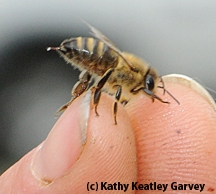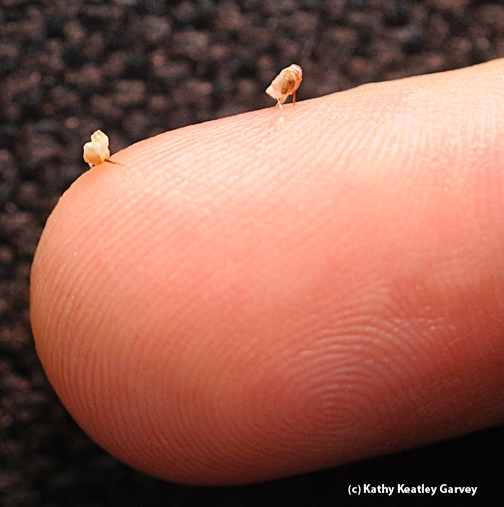
A honey bee apparently stung a 47-year-old father on his foot and he went into anaphylactic shock. Rushed to the hospital, he died 10 days later when his kidneys and heart failed. The article reported he was 6 feet, five inches tall, and weighed 17 stones, which is 238 pounds. (One stone equals 14 pounds).
His family indicated he was unaware of his allergic reaction to bee stings.
A sad and tragic case, indeed.
We know of people who have suffered severe allergic reactions and were raced to the hospital in time and fortunately survived. One was a Northern California parks employee who did not know he was allergic to bee stings.
How many people in the United States are allergic to honey bee stings? Approximately one or two out of every 1000 people, says Extension Apiculturist Eric Mussen of the UC Davis Department of Entomology and Nematology. "The severity of the response, to even a single sting, varies considerably from person to person."
Immediate injections with epinephrine will usually delay the possibility someone unable to breathe. Then a quick trip to a hospital where medical personnel can administrate antihistamines, steroids "and likely more epinephrine" are in order.
"While honey bees away from their hives normally do not pose too much of a sting threat, if the bees are intoxicated by exposure to certain pesticides, they can become an abnormal sting threat at distances quite a ways from the hives. Additionally, individuals who fear a sting, with good reason, sometimes are more apt to try to shoo the bee away. If a bee already is close to stinging, the additional movement of the 'shooer,' or if there is contact with the bee, results in a much greater likelihood of a sting."
Another piece of good advice that Mussen offers: "Individuals who do not appreciate attention by bees should do everything they can to not smell good to a bee. The use of flower-scented or bee products-scented soaps, shampoos, perfumes, or colognes should be avoided. There is no documented scientific study that suggests that honey bees can detect the odor of fear in humans. But if we watch from a distance, the physical reactions of fearful people often tend to be more likely to cause stings than the behavior of the rest of us."
Photographers who capture images of worker bees foraging in flowers are often asked if they've ever been stung. After all, they're just inches away from them. The usual answer: No. The bees are too busy gathering nectar and pollen for their colonies. Stings can and do occur when the worker bees are defending their hives. Or when you accidentally step on one.
Read Mussen's information on bee and wasp stings on the UC Integrated Pest Management (UC IPM) website.
Attached Images:

